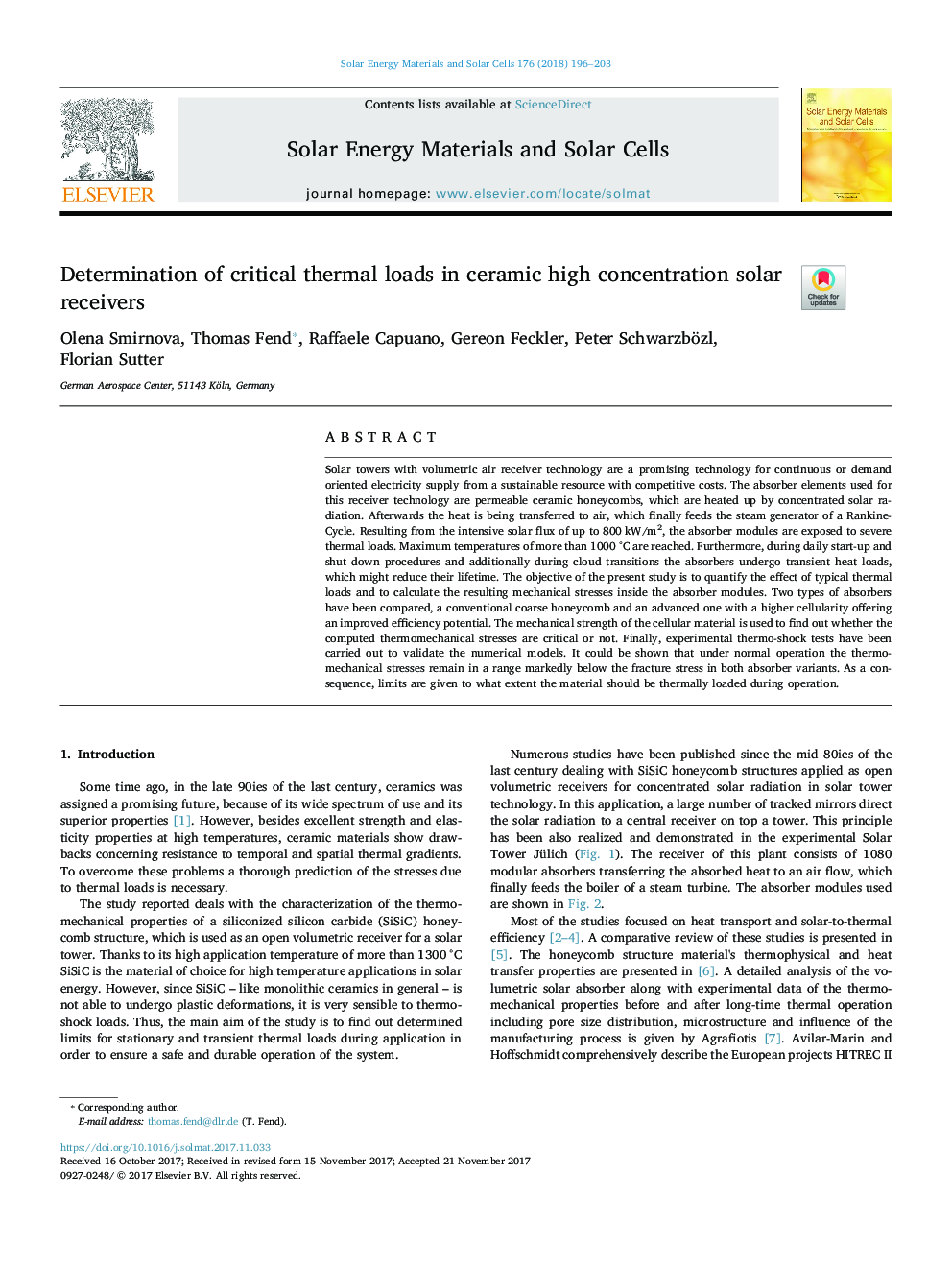| Article ID | Journal | Published Year | Pages | File Type |
|---|---|---|---|---|
| 6534444 | Solar Energy Materials and Solar Cells | 2018 | 8 Pages |
Abstract
Solar towers with volumetric air receiver technology are a promising technology for continuous or demand oriented electricity supply from a sustainable resource with competitive costs. The absorber elements used for this receiver technology are permeable ceramic honeycombs, which are heated up by concentrated solar radiation. Afterwards the heat is being transferred to air, which finally feeds the steam generator of a Rankine-Cycle. Resulting from the intensive solar flux of up to 800 kW/m2, the absorber modules are exposed to severe thermal loads. Maximum temperatures of more than 1000 °C are reached. Furthermore, during daily start-up and shut down procedures and additionally during cloud transitions the absorbers undergo transient heat loads, which might reduce their lifetime. The objective of the present study is to quantify the effect of typical thermal loads and to calculate the resulting mechanical stresses inside the absorber modules. Two types of absorbers have been compared, a conventional coarse honeycomb and an advanced one with a higher cellularity offering an improved efficiency potential. The mechanical strength of the cellular material is used to find out whether the computed thermomechanical stresses are critical or not. Finally, experimental thermo-shock tests have been carried out to validate the numerical models. It could be shown that under normal operation the thermomechanical stresses remain in a range markedly below the fracture stress in both absorber variants. As a consequence, limits are given to what extent the material should be thermally loaded during operation.
Related Topics
Physical Sciences and Engineering
Chemical Engineering
Catalysis
Authors
Olena Smirnova, Thomas Fend, Raffaele Capuano, Gereon Feckler, Peter Schwarzbözl, Florian Sutter,
